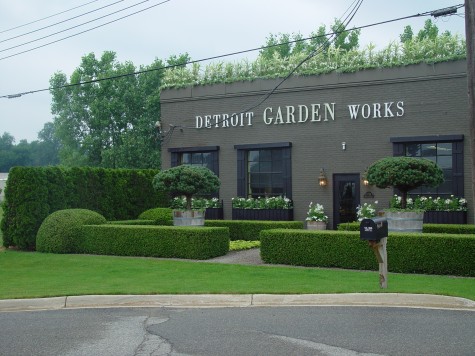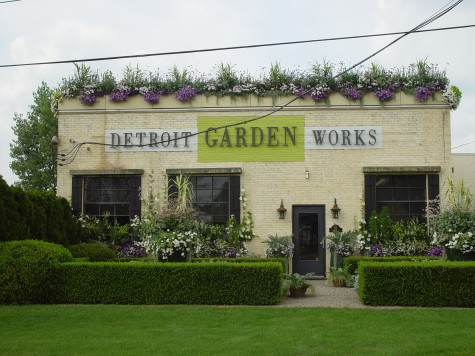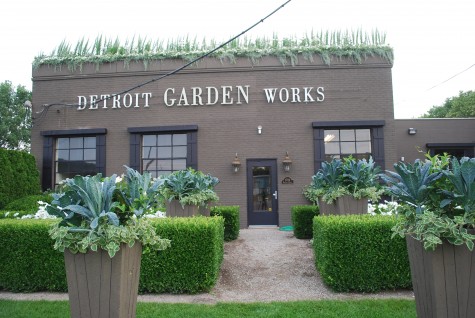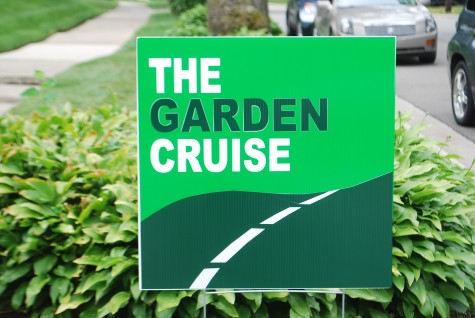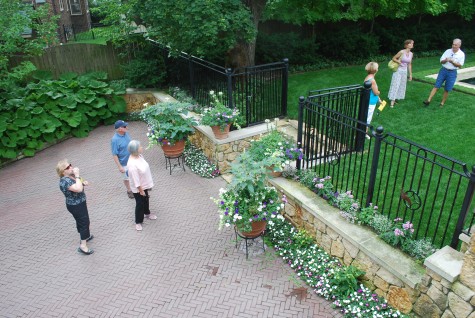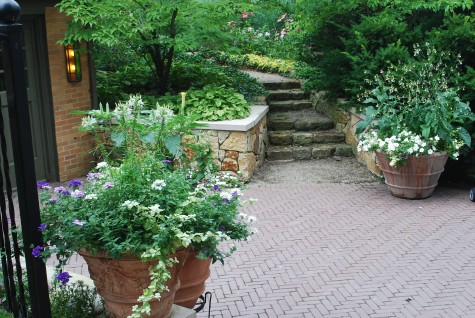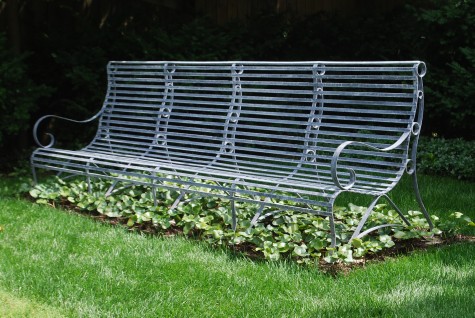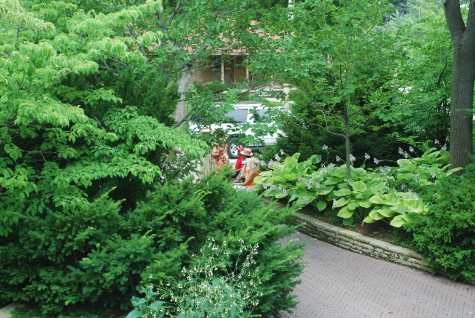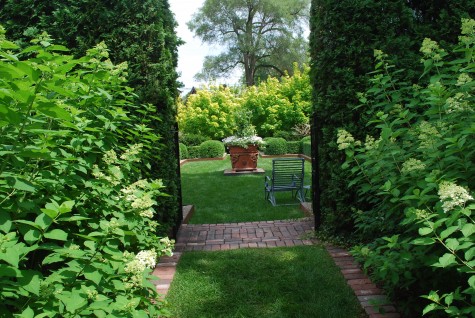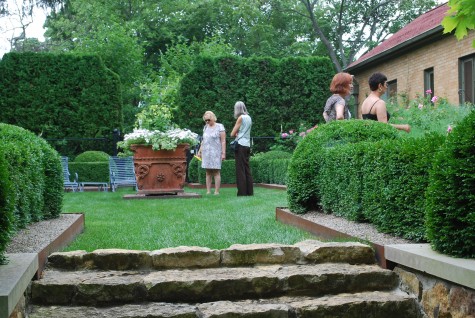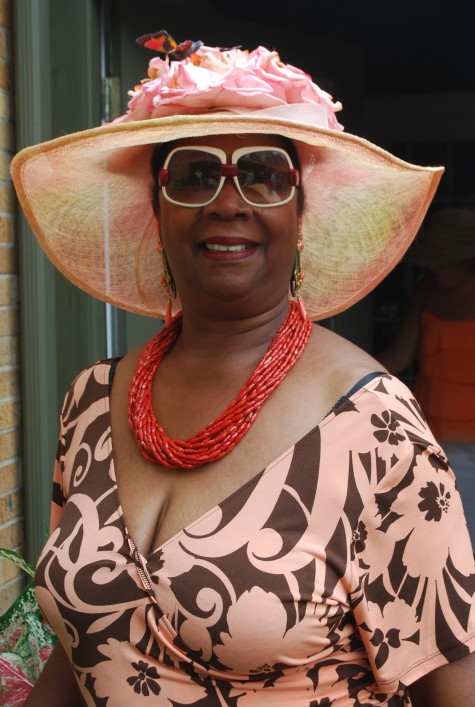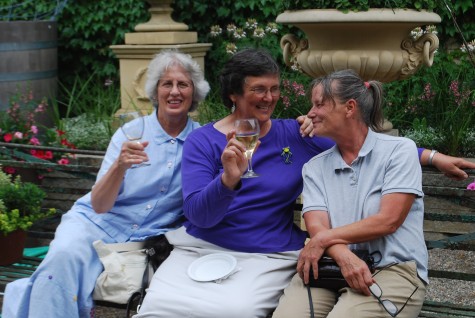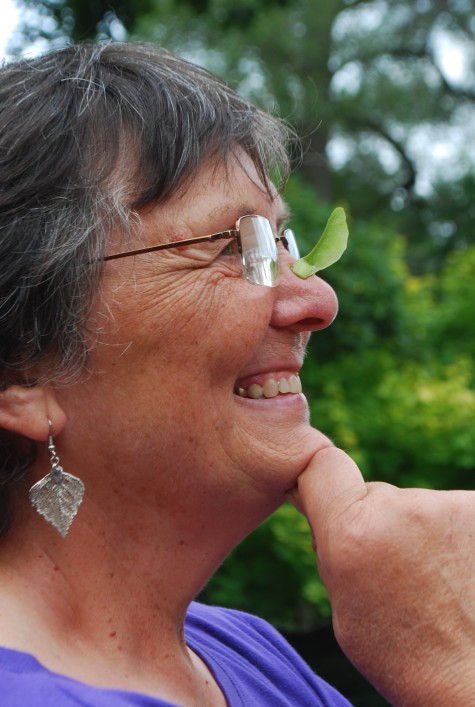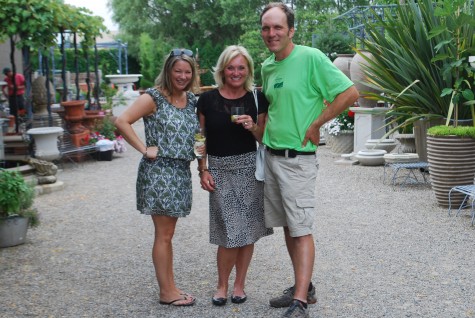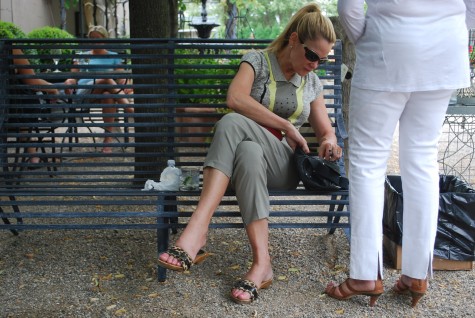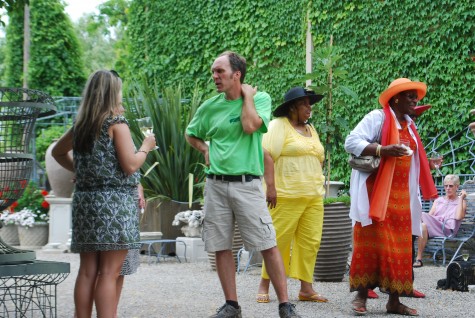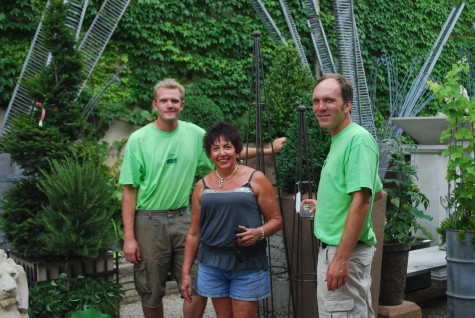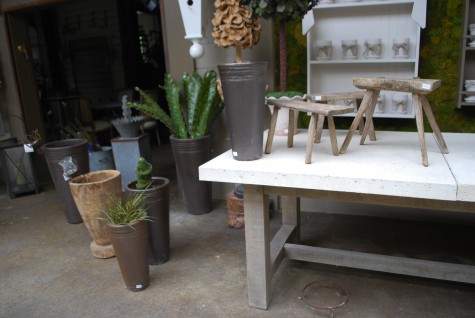 Everywhere I look in my shop, there are signs of dissolution, depression and disrepair-the late summer doldrums have set in. August in Michigan is glaringly hot and dry-nothing much on deck but that sun that is so hot- promising to soon go low, and signal the fall. Great. The perennial garden is every unhappy shade of yellow, accented by some purple bits. Time to pick up, dust everything off, and remake. Every space in the shop decimated by early summer sales worries my eye. How’s that? I can try to explain. In this picture, I see 9 containers whose relationship to each other is unclear. This looks to me like a person was comparing containers of the same shape in different materials, in an effort to sort out what they liked. I think I am looking at the remains of their discussion.
Everywhere I look in my shop, there are signs of dissolution, depression and disrepair-the late summer doldrums have set in. August in Michigan is glaringly hot and dry-nothing much on deck but that sun that is so hot- promising to soon go low, and signal the fall. Great. The perennial garden is every unhappy shade of yellow, accented by some purple bits. Time to pick up, dust everything off, and remake. Every space in the shop decimated by early summer sales worries my eye. How’s that? I can try to explain. In this picture, I see 9 containers whose relationship to each other is unclear. This looks to me like a person was comparing containers of the same shape in different materials, in an effort to sort out what they liked. I think I am looking at the remains of their discussion.
 What we have going on here I call a gaposis. This word of my own invention refers to those places that have gaps-something is missing. The stone mini-cistern is not so friendly to the shape of the brown glazed pot next to it. The empty floor space suggests that which held this visual space together is no longer there. Any gardener who has ever lost a tree understands this look. Spaces-terraces, landscapes, cities, communities- are best organized around that element or group of elements that sets a mood. If you do not have any mood-making going on, it may be time to rearrange.
What we have going on here I call a gaposis. This word of my own invention refers to those places that have gaps-something is missing. The stone mini-cistern is not so friendly to the shape of the brown glazed pot next to it. The empty floor space suggests that which held this visual space together is no longer there. Any gardener who has ever lost a tree understands this look. Spaces-terraces, landscapes, cities, communities- are best organized around that element or group of elements that sets a mood. If you do not have any mood-making going on, it may be time to rearrange.
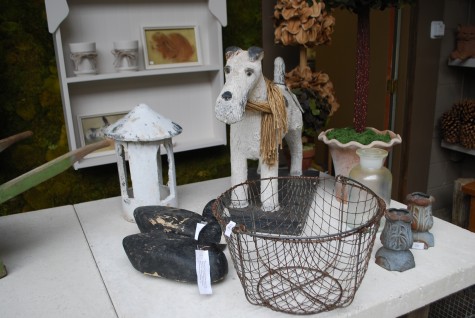 This small space has so much going on that nothing is going on. It is difficult to make sense of the space-what was the intention here? I am sure there was no intent; I am thinking these things are new to the shop, and waiting for a home. People respond strongly to the overall look of a space. Since we are as much interested in design as we are in garden ornament, our intentions are important. Landscapes with a strong idea that is intentionally expressed are visually successful.
This small space has so much going on that nothing is going on. It is difficult to make sense of the space-what was the intention here? I am sure there was no intent; I am thinking these things are new to the shop, and waiting for a home. People respond strongly to the overall look of a space. Since we are as much interested in design as we are in garden ornament, our intentions are important. Landscapes with a strong idea that is intentionally expressed are visually successful.
 This concrete table with a Belgian oak base is very good looking. Three objects tucked underneath its top obstruct one’s view of the table legs. The wirework boxes look stored, not displayed. That every object is the same height-that height that fits neatly under the table top-is visually sleepy. I like objects arranged at different heights, and in different planes. A row of matching arborvitae that describes one plane in a space is asking for what comes next. The relationship of one plant to another, or one object to another, is often more important than the individual elements. There really is no such thing as a boring plant, or object-only boring placements.
This concrete table with a Belgian oak base is very good looking. Three objects tucked underneath its top obstruct one’s view of the table legs. The wirework boxes look stored, not displayed. That every object is the same height-that height that fits neatly under the table top-is visually sleepy. I like objects arranged at different heights, and in different planes. A row of matching arborvitae that describes one plane in a space is asking for what comes next. The relationship of one plant to another, or one object to another, is often more important than the individual elements. There really is no such thing as a boring plant, or object-only boring placements.
 Varying the heights and sizes of objects in a shop is very important. Anything that cannot be clearly seen will be ignored. In the landscape, a view to something beautiful needs framing, not blocking. It is not always so easy to figure out what goes together in a lively and fresh way. I may move something around 10 times, and finally give up-hoping inspiration might strike at some other time. I greatly admire those people who dress shop windows in an exciting way. When I see an interesting plant, my very next thought is where that plant might be placed to good advantage.
Varying the heights and sizes of objects in a shop is very important. Anything that cannot be clearly seen will be ignored. In the landscape, a view to something beautiful needs framing, not blocking. It is not always so easy to figure out what goes together in a lively and fresh way. I may move something around 10 times, and finally give up-hoping inspiration might strike at some other time. I greatly admire those people who dress shop windows in an exciting way. When I see an interesting plant, my very next thought is where that plant might be placed to good advantage.
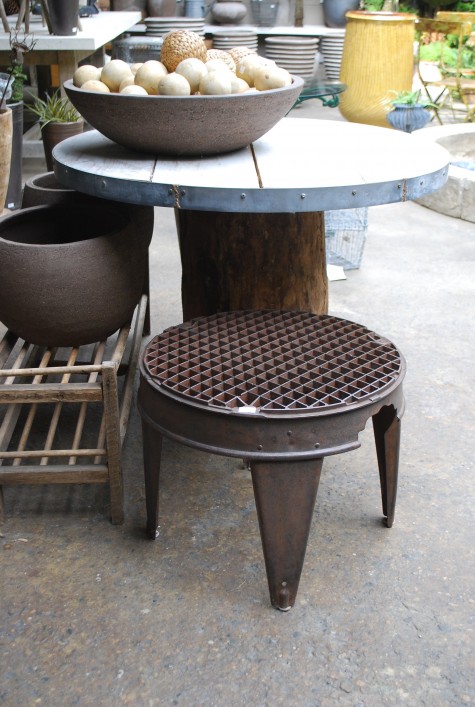 Both of these tables are very handsome in their own right. Each needs its place to shine. I would be very confident having both, but I would separate them such that my eye would move from one to the other. How strong elements are placed in a composition makes for movement and rhythm. As for the old English shoe rack pictured above-it was never meant to hold big heavy pots-physically, or visually. I find that once you use an object for the sole purpose of displaying another object, you diminish its visual stature. Any designer in charge controls the volume and pace of a composition. While one Japanese maple may be singular and visually stellar, rows or blocks of them become something else entirely-a crop. Picking the best maple from a block-tougher than you might think. One of my most favorite gardens was accidental in this regard. I had such a love for peonies and more peonies, I lined them out in rows, just to get them in the ground. This desperation placement diminished the importance of the specific variety in favor of an overall look that enchanted me.
Both of these tables are very handsome in their own right. Each needs its place to shine. I would be very confident having both, but I would separate them such that my eye would move from one to the other. How strong elements are placed in a composition makes for movement and rhythm. As for the old English shoe rack pictured above-it was never meant to hold big heavy pots-physically, or visually. I find that once you use an object for the sole purpose of displaying another object, you diminish its visual stature. Any designer in charge controls the volume and pace of a composition. While one Japanese maple may be singular and visually stellar, rows or blocks of them become something else entirely-a crop. Picking the best maple from a block-tougher than you might think. One of my most favorite gardens was accidental in this regard. I had such a love for peonies and more peonies, I lined them out in rows, just to get them in the ground. This desperation placement diminished the importance of the specific variety in favor of an overall look that enchanted me.
 Texture is a very important element in design. There is plenty of texture action going on here, but the result is muddled. Layering one plant against another, or one object against another is loads of fun. I have moved around more plants more than I would care to admit-just to get that arrangement which suits me. This arrangement I would try to simplify-it just needs more air space. That is my point of view speaking. Another person might find this densely occupied space just perfect. Congestion is not for me. Differing points of view makes for very different outcomes. This is precisely why I like OPG’s- other people’s gardens are great fun to see.
Texture is a very important element in design. There is plenty of texture action going on here, but the result is muddled. Layering one plant against another, or one object against another is loads of fun. I have moved around more plants more than I would care to admit-just to get that arrangement which suits me. This arrangement I would try to simplify-it just needs more air space. That is my point of view speaking. Another person might find this densely occupied space just perfect. Congestion is not for me. Differing points of view makes for very different outcomes. This is precisely why I like OPG’s- other people’s gardens are great fun to see.
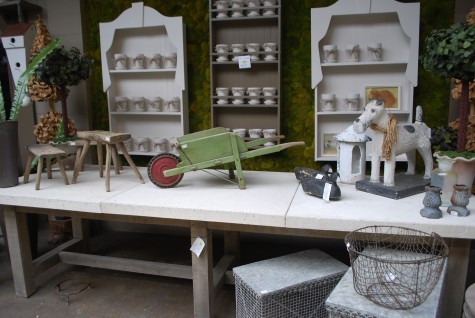
I imagine there is some gardener somewhere that has a vintage child’s wheelbarrow as a centerpiece on their dining table, but I worry this placement does not do justice to this one. No doubt I will need to drag it all over to find just the right spot.
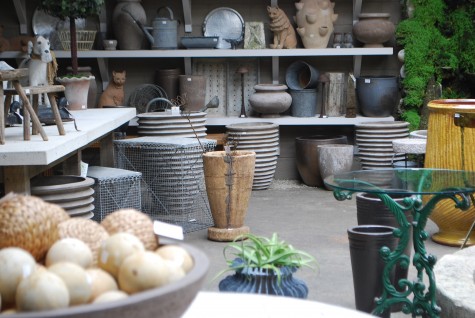
The end of the spring/early summer session in the shop means there will be some time involved in recreating a mood. I was well on my way when I took this picture; more to come.
 1995
1995

